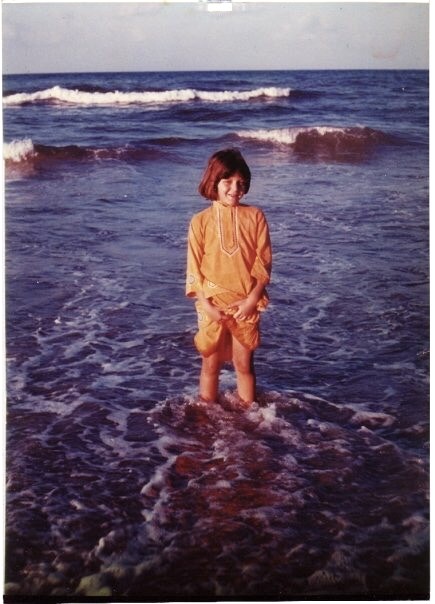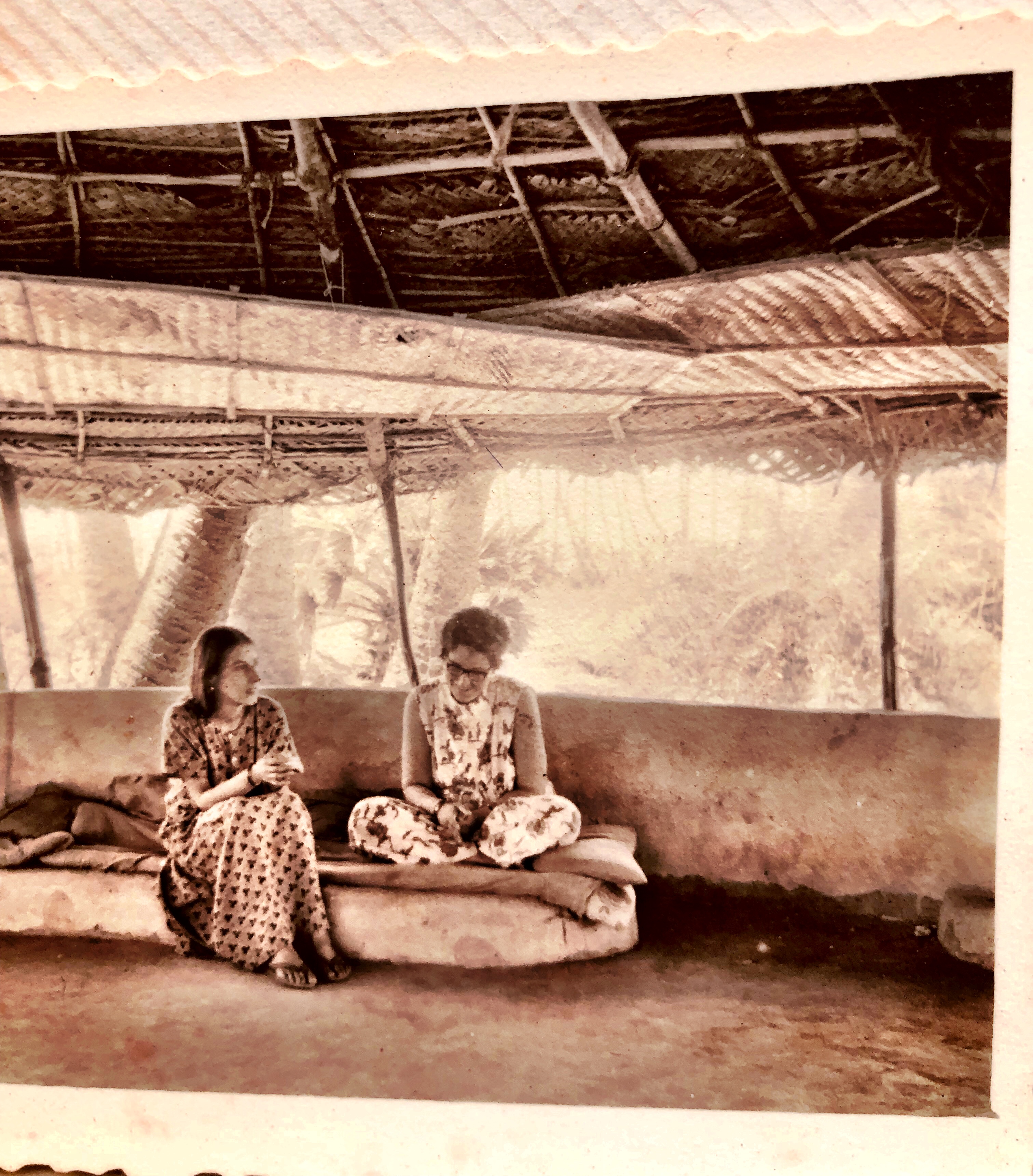
Auroville is located on the coast of Tamil Nadu at about 12 degrees latitude. Its proximity to the Bay of Bengal and the equator qualifies it as “tropical”. As a child growing up there in the 1970s and 1980s, I did not experience our year through the typical western cycles of Spring, Summer, Fall, and Winter. Instead, I used the local vernacular of hot season, monsoon, and cool season. The temperature typically swings from a high of around 104 degrees Fahrenheit in the hot weather of April, May, and June to a low of 60 degrees in the cooler months of December and January.
Unlike the frolicking families joyfully playing outside in Colorado where I live nowadays, summer in Auroville was still and silent. The air was so hot and the humidity so dense (ranging from 85 to 100%) that the atmosphere lay heavily across the landscape and forced people’s breath and movement to slow. When I was young I would lie on the floors in the heat of the day because the brick or mud was cooler and the low altitude of my head on the floor seemed to give me access to slightly cooler, more breathable air. Access to water was probably the most consuming thought on those hot days, water to drink, water to shower and rinse off the copious tropical sweat, and the ultimate jackpot, somewhere to swim and bring down the body temperature for a while.



The heat seemed to invite everyone to slow down and rest during the day. It was common to see people napping under any sliver of shade they could find. Even the stream of tourists and visitors to Auroville slowed to a trickle until the cooler hours of the evening. When I was a kid, I remember keeping a piece of fabric, wood, or cardboard handy so if I had to walk anywhere I could throw it down on the ground when the sand got too hot for my bare feet. I also remember that when I tried to defy the heat and venture out too far on my bicycle I would suffer the consequences of heat rashes and a grumpy temperament that my mother playfully nicknamed “tropo”. “Tropo” was our playful term for the summertime flaring of tempers that seemed to rise in tandem with the temperature.
Summer in Auroville was an invitation to slow down our days, pursue quieter activities, and find a spot to contemplate and rest. Nature seemed to support us by offering a bounty of delicious seasonal fruits unique to the hot time of year. There were so many delicious fruits varying in shapes and sizes that grew in the hot season like mangoes, papayas, jackfruit, and cashew fruits. My favorite was green coconuts and the palm fruit locally known as “nungu”, both high in natural electrolytes and considered cooling foods in Ayurveda. The gelatinous sweet goo of a nungu is like nature’s alternative to ice cream with its cool sticky deliciousness. To harvest nungus someone had to climb to the top of a tall palm tree and cut the fruit down. Then the hard shell was sliced away with a machete. I’d coax the jelly out of the holes in the fruit with my fingers. Even the fruit of the season required deliberate effort to gather, prepare and eat.
Perhaps because of the indoor/outdoor architecture of Auroville homes, our dependence on locally grown food, and minimal access to technology, I had the opportunity to imbibe some of the lessons offered by the hot season, like how to cool my mind when the world outside felt like it was on fire, and how to slow down to stay healthy in the heat and to enjoy nature’s offerings of the season.




